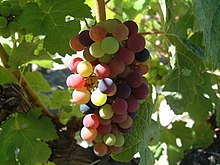**Ripening Mechanisms**:
– Methylcyclopropene as a plant growth regulator
– Production of compounds like alkaloids and tannins to deter premature consumption
– Negative feedback cycle involving plant hormones and proteins to balance ethylene production
– Ethylene’s role in accelerating ripening in climacteric fruits
– Color change in fruits due to chlorophyll degradation and pigment production
– Fruit ripening progression from locule to pericarp
– Enzymatic degradation of fruit structure by polygalacturonase
– Conversion of polysaccharides like pectin into soluble forms
– Breakdown of storage polysaccharides into sugars during ripening
**Ripening Agents and Indicators**:
– Ethylene, calcium carbide, and catalytic generators as ripening agents
– Use of ethylene sensors to control ripening
– Iodine as an indicator for ripening or rotting in fruits
– Different color changes in iodine solution indicating ripening stages
– Absence of starch signaling the start of ripening
– Rapid color change indicating high starch concentration and incomplete ripening
– Iodine remaining unchanged on rotten parts due to starch absence
**Ripening in Specific Fruits**:
– Ripening stages in tomatoes from green to red
– Post-harvest ripening in climacteric fruits due to ethylene
– Distinct ripening behaviors of climacteric and non-climacteric fruits
– Inhibition of ripening in non-climacteric fruits by auxins
– Ripening induction by abscisic acid in fruits
**Ripening Enhancers**:
– Methyl jasmonate’s role in enhancing ripening in non-climacteric fruits
– Upregulation of ripening genes by methyl jasmonate
– Promotion of red coloration, lignin, and anthocyanin accumulation by methyl jasmonate
– Stimulation of anthocyanin accumulation, cell wall modification, and ethylene synthesis by methyl jasmonate
– Ripening indicator function of methyl jasmonate
**Regulation of Ripening Genes**:
– Impact of MaXB3 protein on enzyme stability
– Regulation of ethylene production by MaNAC2, MaACS1, MaACO1
– Influence of methyl jasmonate on ripening genes
– Gene expression modulation in strawberries by vascular, stress, and auxin-dependent factors
– ABA effects on ethylene and phenolic content in strawberries
Ripening is a process in fruits that causes them to become more palatable. In general, fruit becomes sweeter, less green, and softer as it ripens. Even though the acidity of fruit increases as it ripens, the higher acidity level does not make the fruit seem tarter. This effect is attributed to the Brix-Acid Ratio. Climacteric fruits ripen after harvesting and so some fruits for market are picked green (e.g. bananas and tomatoes).

Underripe fruits are also fibrous, not as juicy, and have tougher outer flesh than ripe fruits (see Mouth feel). Eating unripe fruit can lead to stomachache or stomach cramps, and ripeness affects the palatability of fruit.
